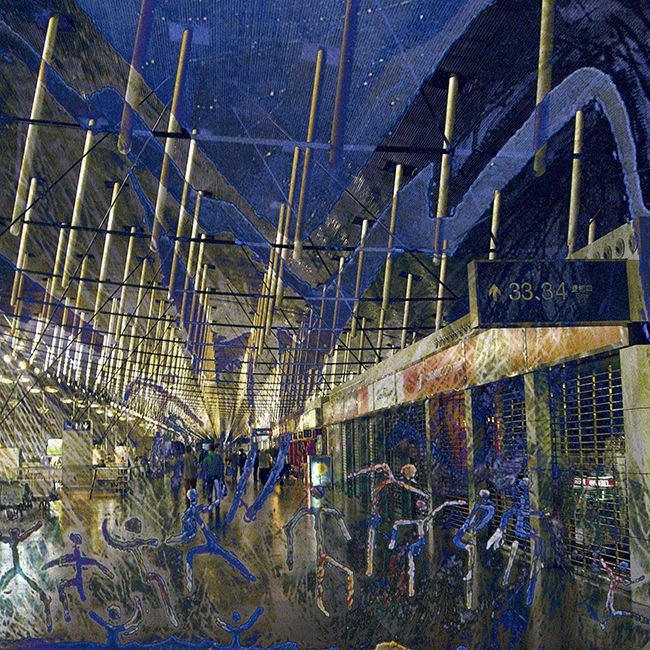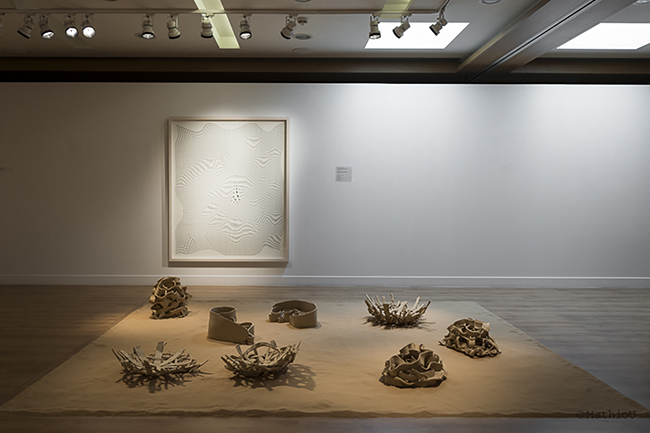Vicky Tsalamata’s project La Comédie Humaine C offers a fresh lens on the complexities of human existence, drawing inspiration from Honoré de Balzac’s La Comédie Humaine. Tsalamata uses this as a backdrop to comment on the way external forces have shaped—and continue to shape—human lives. Her work casts a spotlight on the tension between our sense of personal significance and the vast, often uncontrollable factors that govern our lives. At the same time, she emphasizes how crucial human connection has become, particularly in a world recovering from the isolation of the COVID-19 pandemic.

In her mixed-media approach, Tsalamata employs archival prints on Photo Rag Hahnemuehle 100% cotton art paper, a material choice that enhances the sense of fragility and endurance present in her work. The project taps into the subtle yet potent forces that bind people together, as well as the unseen divisions that can pull us apart. Her human figures, meticulously etched from iron matrices, take on a raw and textured appearance. These forms, shaped with an acetylene flame and measuring 21 to 29 centimeters in height, are etched with methods such as aquatint and dry point, resulting in figures that carry a sense of imperfection and vulnerability.
Tsalamata’s process digs deeper than the surface. Using high-resolution scanners, she reveals hidden details in her iron matrices—elements that would otherwise remain invisible to the naked eye. This intricate manipulation brings to life delicate webs of human interaction, extending infinitely outward. The visual effect is a metaphor for the intangible but ever-present connections between individuals, highlighting how our lives are interwoven in ways we might not consciously recognize.

A central theme in La Comédie Humaine C is the delicate interplay between isolation and connection, which became especially poignant during the global pandemic. Her figures, linked together through the etched iron matrices, represent the relationships and dependencies that have come to define human life in a hyper-connected digital world. In particular, Tsalamata reflects on the growing role of social media and other online platforms, which have both facilitated new types of relationships and shifted how we perceive personal connection.
Tsalamata’s work will be featured in the Sixth Cacak International Printmaking Biennial 2024, where its resonance with contemporary audiences will undoubtedly be felt. In her artist’s statement, she elaborates on her concept of “Synapsis,” a term she uses to describe the hidden systems that underpin human relationships. For Tsalamata, human history is a vast web, and within this web, social networks function almost like a living organism, exerting influence on our emotions, health, and interpersonal connections.

Tsalamata also takes a critical view of how digital technology has transformed human relationships. She examines the ways in which platforms like social media have reshaped the way we communicate, creating connections that didn’t exist a few decades ago. Her work doesn’t shy away from questioning how these digital relationships affect our overall sense of connection and belonging in the world today.
Through La Comédie Humaine C, Tsalamata invites viewers to reflect on their own roles within this intricate web of relationships, offering a perspective that blends traditional printmaking with contemporary themes of communication and digital connectivity. The interplay between her materials and subject matter is deliberate—combining age-old techniques with modern technology to offer a nuanced commentary on human interaction.
Her work captures a moment in time when the fragility of human bonds has become starkly evident, yet the need for connection remains as strong as ever. Through her meticulous process and attention to detail, Tsalamata offers a layered narrative that encourages viewers to think about the forces that shape their lives, both seen and unseen. As her iron matrices weave together figures that represent human connection, she leaves a lasting impression about the complexities of our relationships and the ways we are all tied together in an intricate social fabric.

